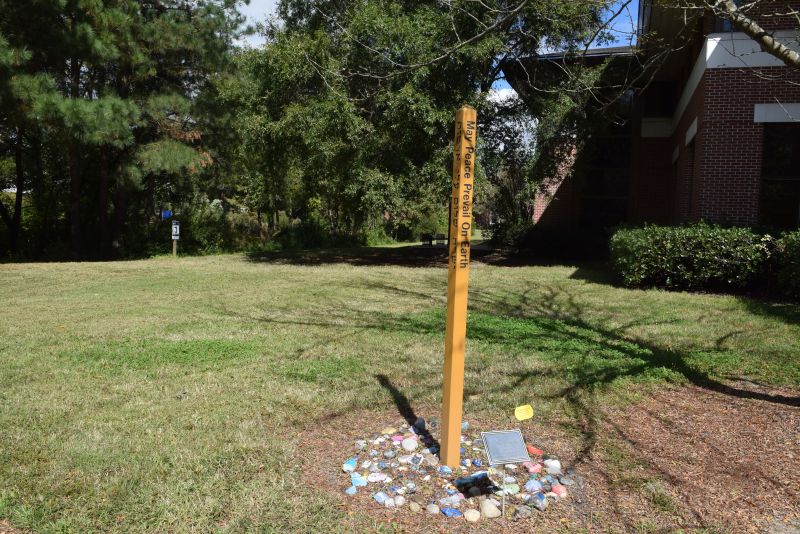Share this Story
If This Ground Could Talk
A tour of unrecognized sacred spaces at Virginia Wesleyan University
University News | October 22, 2024
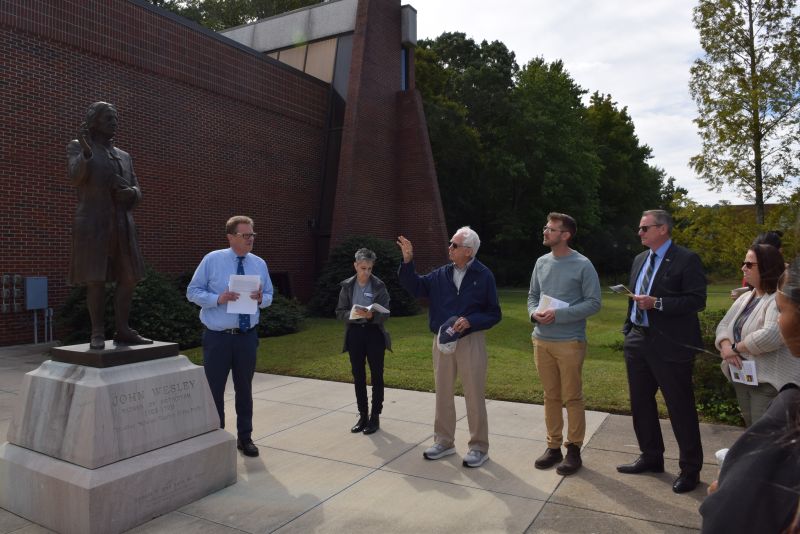
A sacred space is more than just a physical location; it is a place imbued with significance, memory, and a sense of reverence. While some such spaces are obvious, (e.g., Yosemite National Park, the Lincoln Memorial, the National Cathedral), VWU’s sacred spaces may not be as immediately recognizable. The tour offered valuable insight into the history and significance of these sacred spaces.
Conducted by Professor of Sociology Kathy Stolley; Professor of Religious Studies and Joan P. and Macon F. Brock Jr. Director of the Robert Nusbaum Center Craig Wansink; Archivist and Vice President for Academic Affairs and Kenneth R. Perry Dean of the College Emeritus Stephen Mansfield; Professor Emeritus of Philosophy Larry Hultgren; and Associate Director of the Robert Nusbaum Center Kelly Jackson, the tour addressed questions such as:
- What did newly-freed slaves have to do with the VWU campus?
- What is the intentionally secret message of John Wesley?
- Why did a grove of trees cause deep controversy on campus?
- Why is a peace pole at the center of campus?
- Why was AIDS seen as particularly important here?
These and other questions were answered on the walking tour of VWU’s sacred spaces.
Sacred Spaces at VWU:
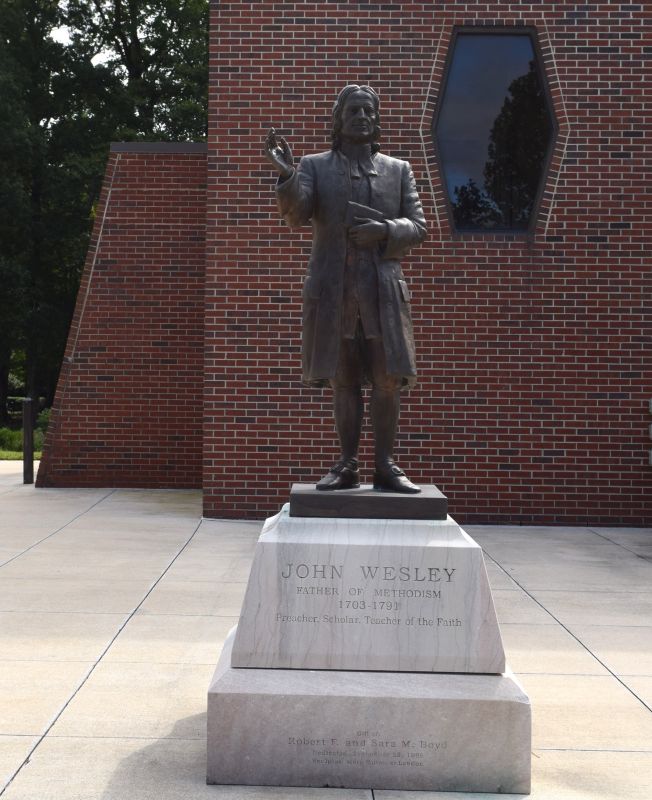
Located in front of the Monumental Chapel, the life-sized bronze statue of John Wesley (1703 - 1791), the founder of Methodism, stands as a reminder of Virginia Wesleyan University’s Methodist heritage. Like Duke, Emory, and Boston Universities, VWU is one of 117 Methodist-affiliated institutions of higher education. Wesley was not only a religious reformer but also a social advocate, with a theology that focused on liberating and empowering society’s marginalized—the poor, enslaved, and imprisoned. His advocacy often made him unpopular and came at great personal risk.
Beech Grove
An old-growth beech forest became a symbol of student activism in 1991, when a construction project threatened its existence. Student environmentalists rallied and advocated for the relocation of one building, successfully sparing much of the grove. The site was officially designated a Natural Heritage Resource in 1992 by the Commonwealth of Virginia. Beech Grove symbolizes ecological awareness and activism, reminding us that students have the power to protect what they believe in.
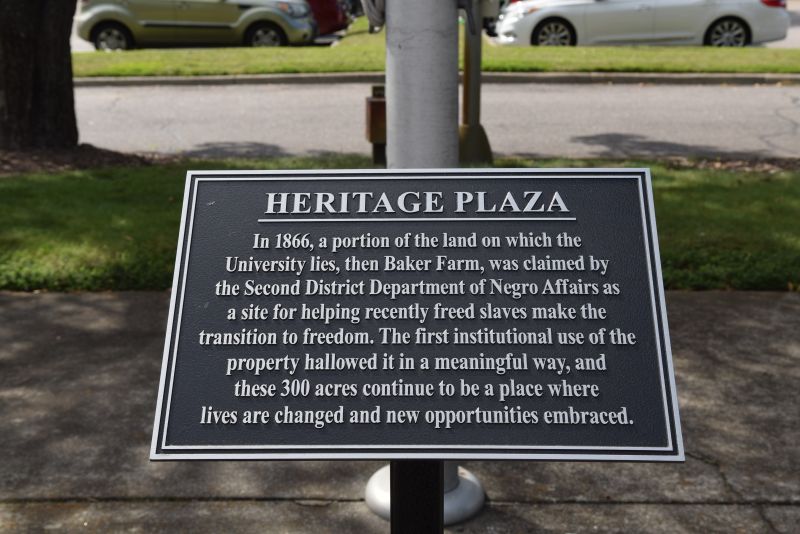
In 1866, a portion of the land that now forms the University—then Baker Farm—was claimed by the Second District of Negro Affairs as a site to help recently freed slaves transition to freedom. This first institutional use of the land hallows it and gives it a profound historical significance. These 300 acres have since transformed countless lives, continuing to provide opportunities for growth and renewal.
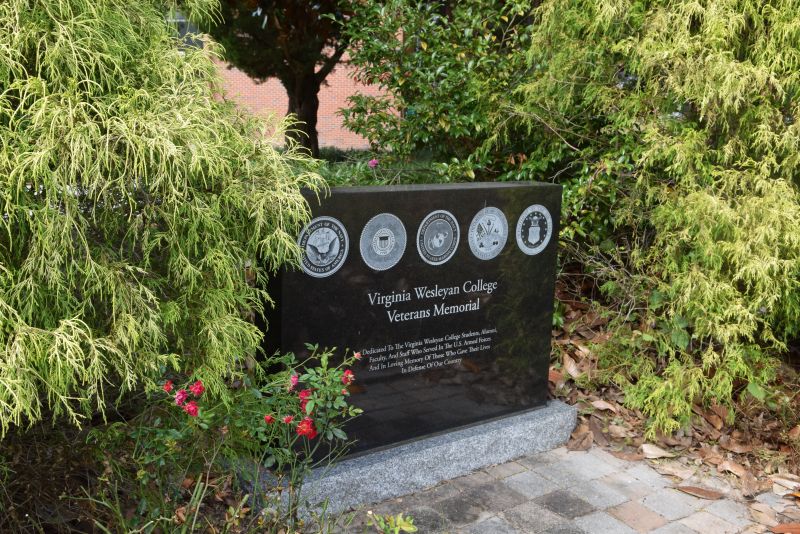
Virginia Wesleyan’s Veterans’ Memorial honors members of the university community who served in the United States Armed Forces. Each year, the VWU community gathers here on Veterans Day to reflect on the sacrifices of those who served. During World War II, when the land was owned by the Smith family, part of their farm was leased to the federal government to build barracks for training pilots at nearby Norfolk International Airport.
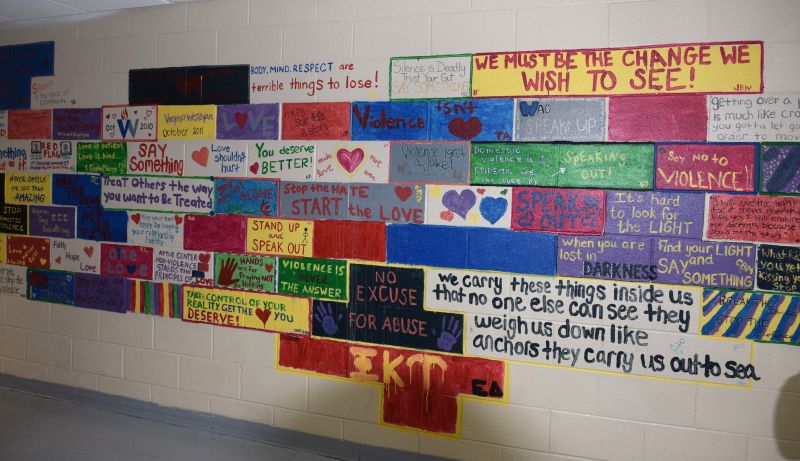
Created by students during Domestic Violence Awareness Month in 2008, this wall stands as a permanent testament to the campus community’s concern for victims and survivors, and serves as a reminder of the hidden burdens carried by those who often suffer in silence. Each year, various initiatives like the Walk a Mile in Her Shoes Campaign demonstrates VWU’s enduring care for victims of domestic violence.
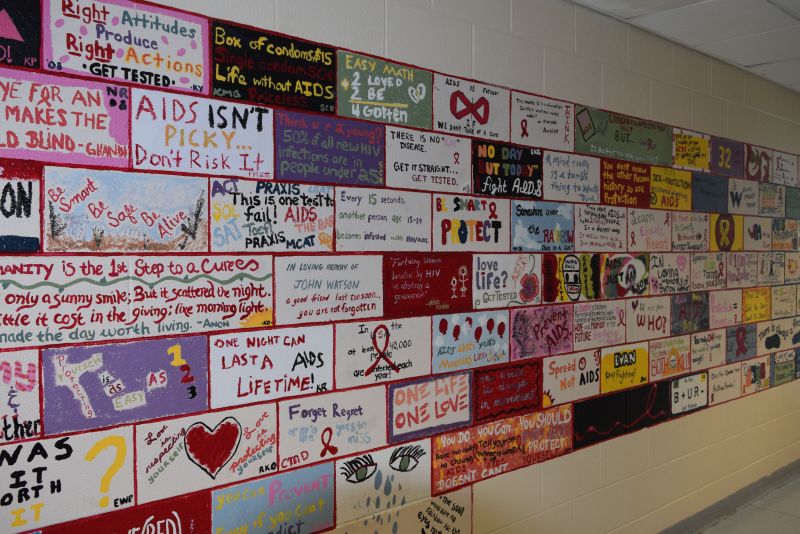
Inspired by the national AIDS Memorial Quilt, the AIDS Memorial Wall at VWU chronicles the impact of the AIDS epidemic. The original black blocks, painted in 1999, symbolize the pain and loss caused by the disease. Additional blocks were added in 2008 and 2017, representing prevention, testing, and hope. The wall continues to be a reminder of the ongoing need for awareness and education around HIV/AIDS.
Peace Garden (est. 2005)
The Peace Garden, at the center of campus, is a tribute to those who have fought for peace and justice. It is a reminder of the importance of honoring peacemakers like Martin Luther King Jr., Mahatma Gandhi, and John Wesley, who were active and tactical in waging peace in the world. The garden calls us to reflect on how peace is more than the absence of conflict –it is the presence of justice, equality, and the courage to defend what is right.


